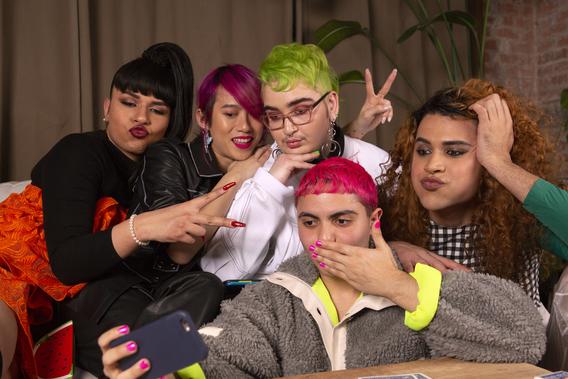
Background: Research shows that LGBTQ+ adolescents are at disproportionately high risk of poor health experiences, health outcomes, and health behaviors compared to their straight, cisgender peers.
In the field of healthy youth development, we see a gap of how or if the stigma individuals experience related to their intersectional identities (related to race, sexual orientation, gender identity, disability status, etc., e.g. TGD youth of color, youth who identify as TGD and also pansexual/queer) correspond to the health and behavioral risks and protections they experience.
Because individual and social identities are experienced simultaneously (e.g. as a person who is both Black and trans), various forms of social oppression (e.g. racism and transphobia) may work together to differentially affect the health of LGBTQ+ people with multiple marginalized social identities.
This study: This University of Minnesota Medical School’s Department of Pediatrics research project, continues to identify significant disparities among youth at the intersections of sexual orientation, gender identity, and race/ethnicity in emotional distress, substance use, sexual and HIV-prevention behaviors, experiences of bias-based bullying, interpersonal protective factors, and numerous additional health concerns and experiences.
Our work is informed by intersectional factors that build our framework: we look closely at how young individuals experience power (or lack of) and privilege (or lack of), based on their interrelated social identities, in order to understand how these intersections confer risk and resilience to LGBTQ+ youth of color.
We further hypothesized that living within these intersecting social identities may create unique challenges to – and strengths that promote – healthy development among youth.
We pose these specific research questions:
- What differences exist in bullying, risk behaviors, emotional distress, and protective factors among youth with different social identities?
- How do differing protective factors and other characteristics explain the above outcomes among youth with different social identities?
- What positive and negative experiences are uniquely relevant to the overlapping, simultaneous production of inequalities by LGBTQ+ identity, race/ethnicity, and other social identities?
- With which intersecting social identities do we see individual LGBTQ+ youth of color facing the greatest struggles?
Eventually, we hope to recommend specific interventions and guidelines that center, support, and protect LGBTQ+ youth, particularly trans and gender-diverse (TGD) youth of color.
The research: Our quantitative work builds on existing surveillance data from three adolescent health data sets: the Minnesota Student Survey (N ~122,000) and California Healthy Kids Survey (N ~1,042,000); plus the LGBTQ National Teen Survey (N ~17,000). Together, these provide us with very large samples of diverse populations and appropriate questions about social experiences.
Our qualitative research, in the form of interviews with over 65 LGBTQ+ youth, gives us detailed context on individual, interpersonal and community assets that informs our quantitative findings. Since 2021, we have used these quantitative and qualitative methods to:
- Analyze combinations and intersections of social positions for LGBTQ+ adolescents.
- Analyze risk factors (e.g. bullying victimization) and protective factors (e.g. family support, inclusive sex education).
- Look at specific co-existing behaviors, experiences, and health conditions; emotional distress, substance use, sexual behaviors, HIV prevention behaviors, school absence, disordered eating, asthma, sports involvement, healthy youth development opportunities, sleep, and housing stability.
This research is supported by the National Institutes on Minority Health and Health Disparities under Award Number R01MD015722.